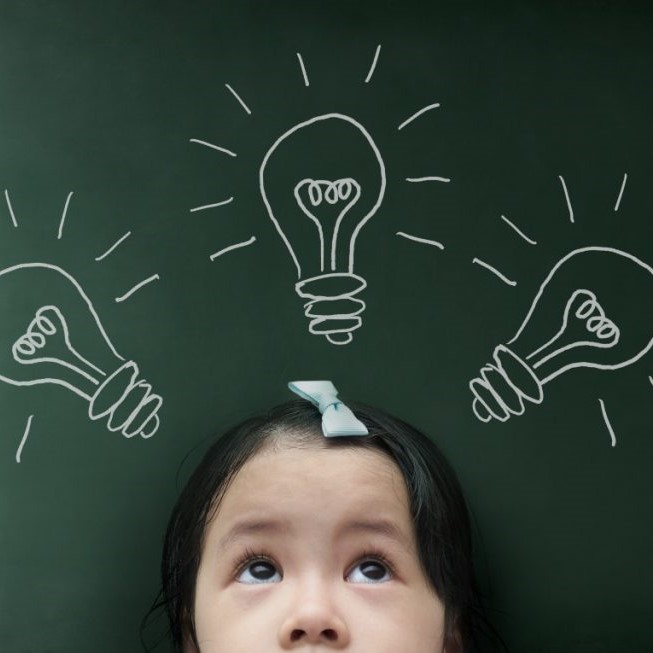Beauty and the Brain


Promoting development in the early years
Our brains are beautiful and marvellously complex things. The most powerful organ in the body, the human brain creates, controls and connects our thoughts, and helps us to navigate and act in every experience we have throughout our lifetime. The brain is responsible for every piece of knowledge we rely on, and the skills we deploy in our day to day lives. They help us to learn new things, to communicate with others, to understand, and they allow our bodies to survive.
The human brain is built of neurons. The brain communicates with itself and the rest of the body by the creation and the utilisation of neural pathways, called synapses. Synapses are created by exposure to information and experience. They are strengthened as I make similar connections between different experiences frequently. The brain’s capacity for creating new synapses and pathways is called plasticity. Neural plasticity decreases as we age, and has been identified as being at its peak from pre-birth, until the age of 7. In this respect, our capacity for learning new things is much simpler in early childhood, than later in life.
The importance of engaging with children, and exposing them to a rich variety of stimuli, particularly in the early years, is that the younger we are, the higher our capacity for synapse development. Activating the parts of our brain required to attain different skills and information is far likelier when it is at its most plastic, prior to age 7.
At around 7 years of age, our brains increase use of the process of ‘pruning’. The pruning process is where the brain begins to acknowledge which synapses are relevant and irrelevant, and starts to erase the pathways which have been ventured down less. This is an essential aspect of the learning process, however, emphasises the criticality that babies, toddlers and young children are provided with access to vast and varied, enriching experiences throughout their early years, in terms of their capacity for knowledge and learning.
There has been a large array of research to support this claim, and many studies have found that it is easier for young children to learn a second language; to learn to swim; to develop relative musical pitch, to develop positive mindsets in relation to the self, than it is for older children and adults.
To visualise these processes and their relation to children’s learning, we provided an example from a baby’s perspective in our Curiosity magazine (which you can access for free for 2 months on our site):
“It’s like when mum and I go out for walks to our favourite places, we choose the same path again and again, so it’s well worn and remembered. Each time we ‘walk’ the path, the deeper and stronger it becomes, and the easier it is to follow.”
Building on this, you might also like to picture when a toddler is developing vocabulary and speech, and how they learn about associated objects:
Toddler: “Car!” *points to car*
Adult: “Yes that is a car. Well done – clever girl!”
Toddler: “Car!” *points to bus*
Adult: “Good thinking but that was a bus”
Toddler: “Bus.” *repeating adult*
Adult: *nods*
Toddler: “Bus!” *points to lorry*
Adult: “I can see why you think that because a bus is long, but this is called a lorry. A bus takes lots of people to and from different places, and a lorry carries other things like food and clothes.”
In this example, the child is developing related synapses every time they see a moving vehicle, and they are also developing synapses to help them to differentiate between types of vehicle. They are learning so many pieces of information through this process, such as a car is something that has four wheels; a bus is something that has four wheels and is long; a lorry is something that has four wheels, is long and carries objects.
As practitioners working with early years learners, we have a responsibility to create experiences in our settings which help children to learn and grow. As we have mentioned in previous blogs, curiosity is the initial key stage for learning in childhood. When our curiosity is sparked, we have a desire to investigate, and when we investigate, we discover. In this respect, practitioners should be motivated to spark children’s curiosities in everything they experience in our settings.
We should fill our spaces with wonder-provoking objects, and question-creating combinations and communication. We should enrich their input through appreciating and returning their conversations with us. We should strengthen their existing knowledge by reassuring and repeating phrases.
We have the privilege of walking the paths of thought and experience with early years learners for a large percentage of their daily waking hours. We can make a meaningful difference to every child who walks through the door to our settings, which can make a positive impact to the rest of their lives. So step bravely, think creatively, and create curiosity in the experiences you share with your wee ones!


